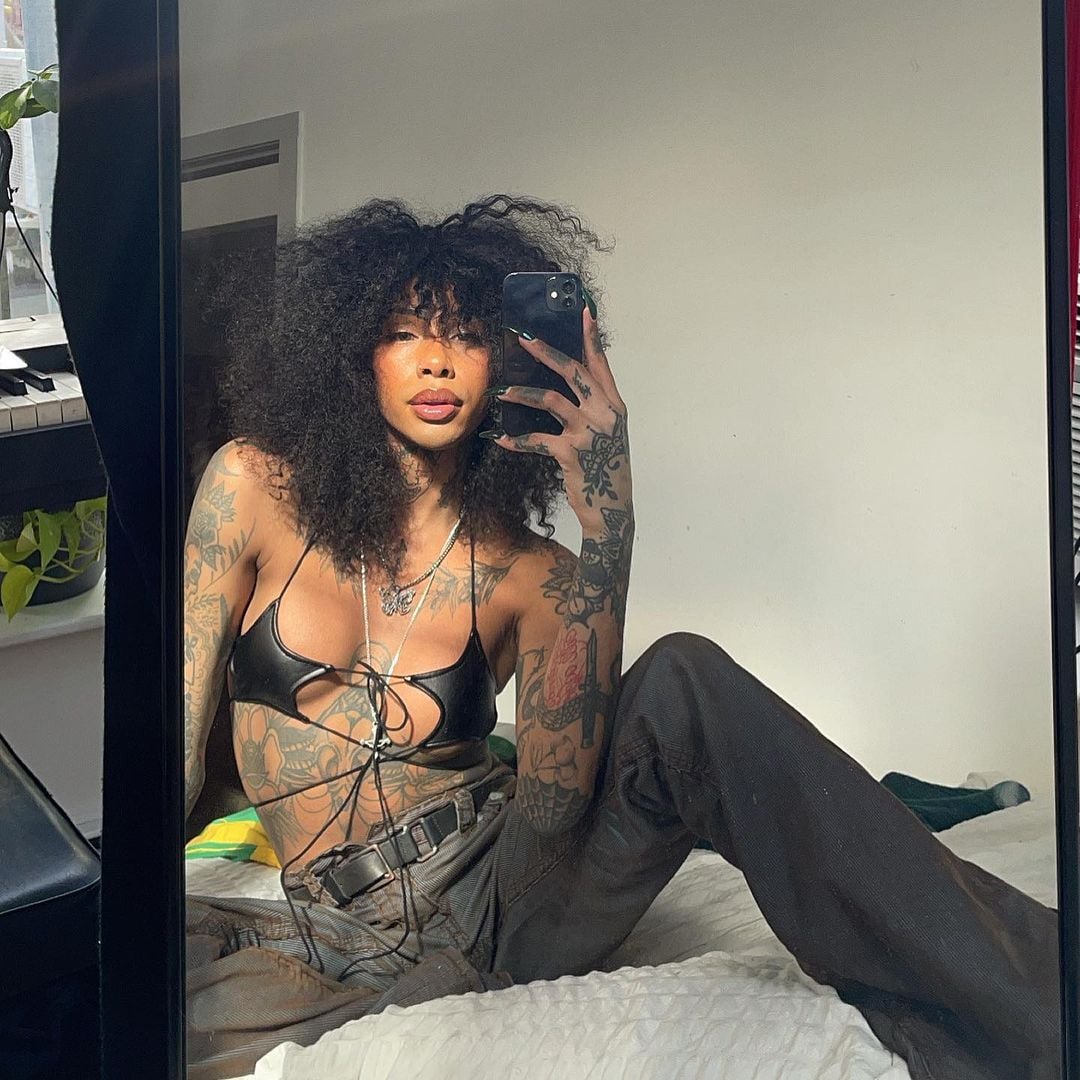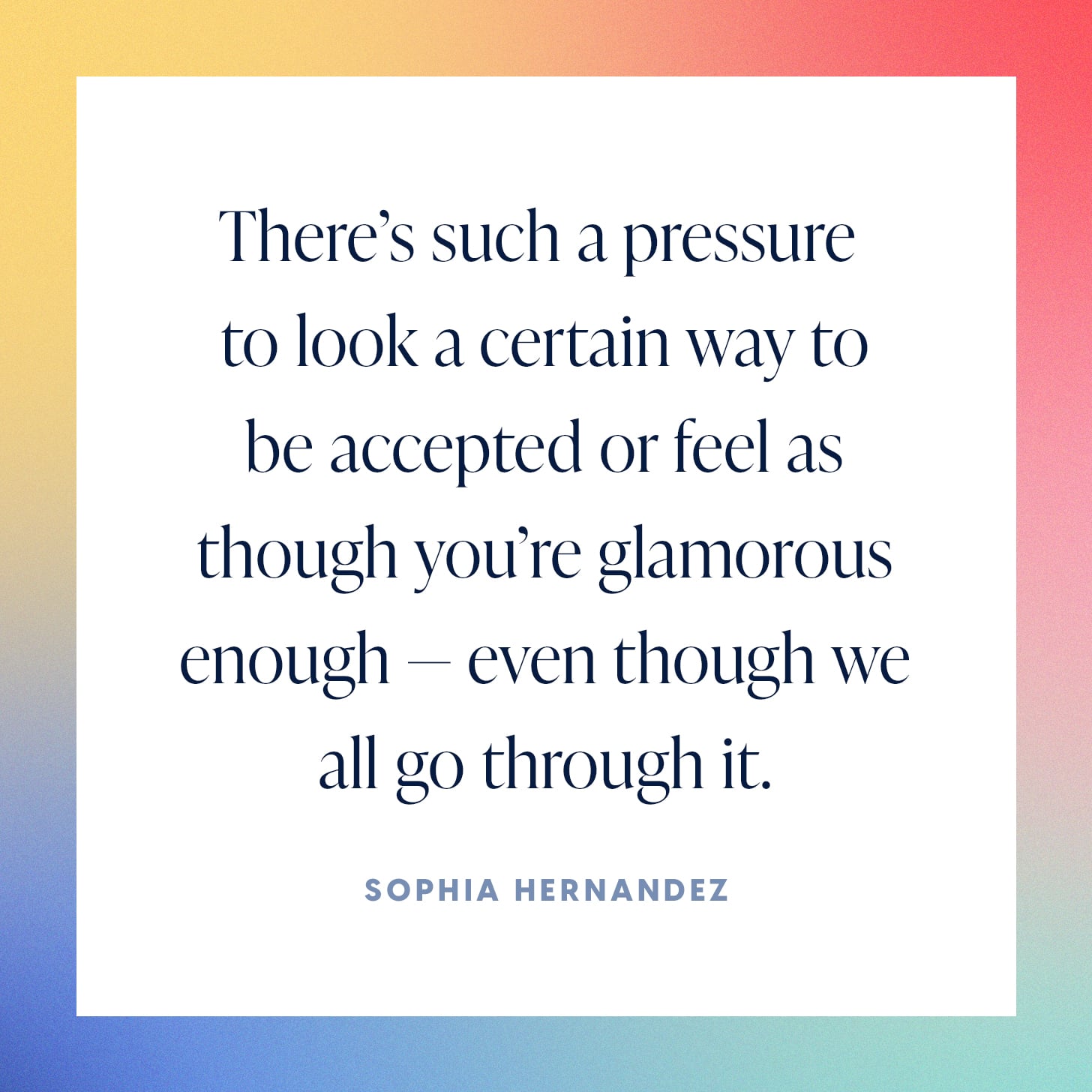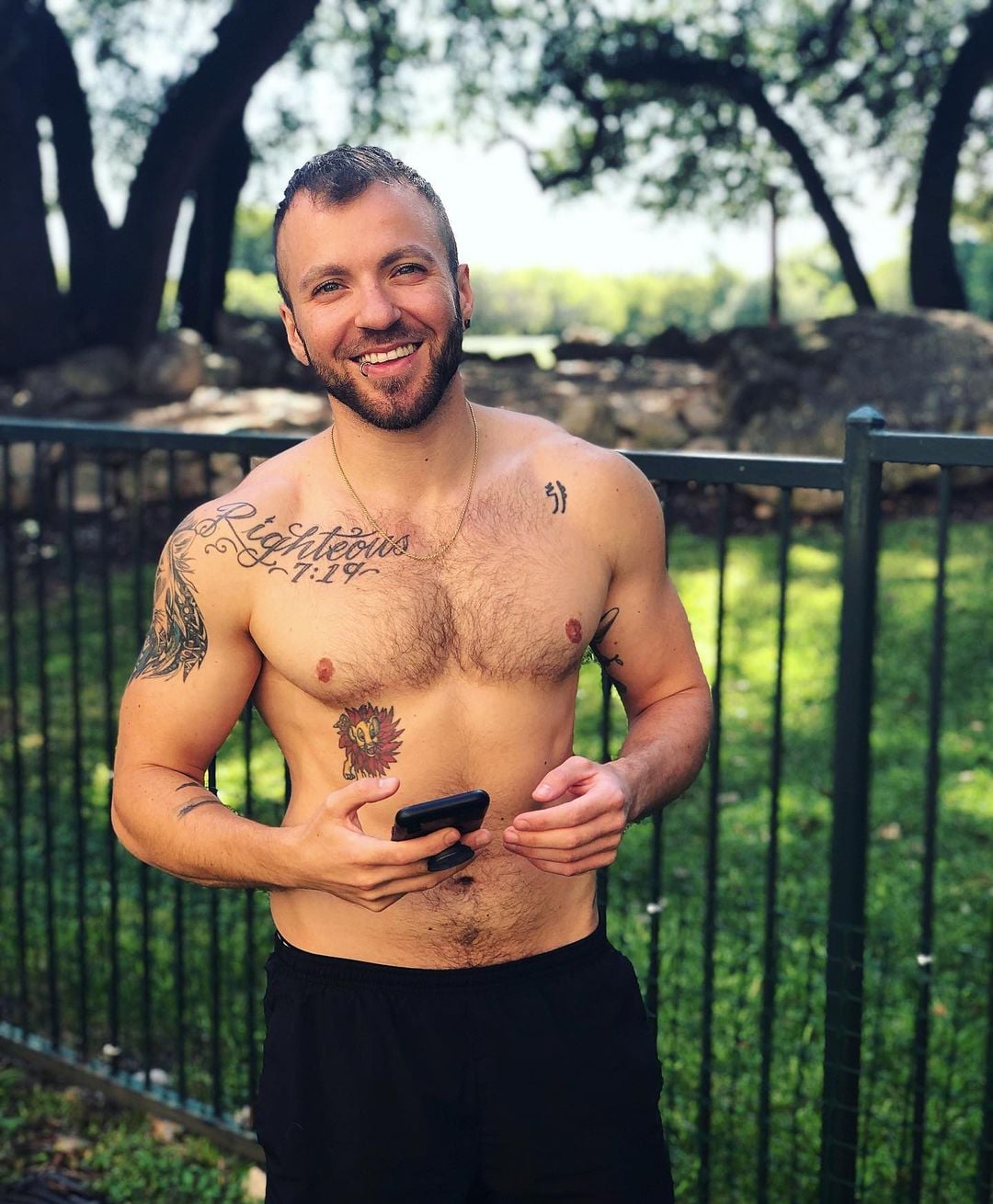
Image Source: Kae Goode / Sophia Hernandez / Aydian Dowling and Photo Illustration: Michelle Alfonso [1]
Long before we had the vocabulary to define what the "perfect body" looked like [2], those beauty standards were placed onto women, men, and everyone in between throughout cultures around the world [3]. These ideals have changed from decade to decade, yet the pressure to conform has remained constant. This undeniable truth holds particular weight among trans individuals [4] as the concept of the perfect body takes on new meanings.
"Before I even started to physically transition, the 'perfect body' was passing — which would be just looking like a cisgender man," Aydian Dowling [5] — content creator, first trans model on the cover of Men's Health, and CEO of the Trace [6] app — tells POPSUGAR. "That was always my goal at the very beginning. Having two older brothers, I just wanted to look like the third brother."
The ability to pass is an essential goal for many trans people. Through options like hormone replacement therapy [7] (HRT) and gender-affirming surgeries, trans individuals are able to present themselves to the world as the gender they identity with and ease their gender dysphoria, but also protect themselves from being clocked or misgendered, harassed, attacked, or worse.
Fatal violence against transgender and gender non-conforming individuals has increased to record-breaking levels in the past several years, with 2021 being the deadliest year on US record, according to the Human Rights Campaign [8]. An overwhelming number of these victims were trans people of color, in particular Black trans women. In fact, of the 57 transgender fatalities reported by the HRC in 2021, a staggering 58 percent were Black trans women.
"I think about how my body navigates through this world and how important survival is for a lot of Black trans women."
"I think about how my body navigates through this world and how important survival is for a lot of Black trans women," says Kae Goode [9], an artist, model, organizer, and Black trans woman. "That's why some folks would rather be cis-assumed or live a life of being stealth. Unfortunately, wanting to be cis-assumed has always been a part of my transition and my safety will always be in the back of my head. But I'm just trying to find solace in the fact that I might not always be able to reach that bar."
The dangers actively facing trans individuals are omnipresent — and for many, gender-affirming surgeries as well as noninvasive cosmetic procedures (injections like Botox [10] and fillers [11]) can be vital. However, as many insurance providers exclude gender-affirming surgeries from their policies, which can cost tens of thousands of dollars. "Early in my transition, I didn't feel like medically transitioning was at the top of my to-do list, but I think that was affected by my position and class," says Goode. "At the time, I was a person navigating homelessness and trying to survive the college experience as a Black trans woman."

Image Source: Sophia Hernandez [12]
Despite the challenges she faced early on in her transition, Goode was able to eventually receive gender-affirming care thanks in part to the community she found. Community is fundamental for trans individuals — whether that be for ensuring safety, crowd-funding for medical procedures, or bonding over a shared experience — and is often found online.
"Social media is a double-edged sword," says Sophia Hernandez [13], a model, content creator, and Black trans woman. "Trans women can speak amongst each other on TikTok, Twitter, and Instagram about how our different journeys overlap and show different perspectives. Then there's the other side of the sword, which is comparison.
"Other trans girls see each other and are like, 'Oh she's prettier than me because she has this.' And I've definitely been guilty of it," she continues. "There's this weird notion that I have to look like these other trans girls to have the lives they portray on Instagram. It doesn't have to be, and it never had to be this way, but there's such a pressure to look a certain way to be accepted or feel as though you're glamorous enough — even though we all go through it."

Image Source: Photo Illustration: Michelle Alfonso [14]
The constant comparison and self-critique has caused many trans people to build up their ideal "perfect body" in their heads. For some, that's led to body dysmorphia [15], a mental illness that causes an individual to hyperfocus on perceived physical flaws. The combination between that and societal beauty standards can have a profound impact on their well-being.
"I always categorized how I felt as gender dysphoria, and then I realized that what I saw in the mirror wasn't what my wife saw," Dowling says. "It's almost like gender dysphoria created the body dysmorphia, and, for me, I wanted to have no hips. I wanted this very stereotypical, born-male-at-birth body, which is ridiculous because many men have hips. But you create in your mind this 'perfect body,' and this 'perfect body' really revolves around relieving all of this emotional pain you feel."
Dowling was able to alleviate his gender dysphoria through hormone replacement therapy and top surgery [16]; however, the body dysmorphia came after other parts of his body. "No matter how thin I got, I always felt like my hips were huge," Dowling says. "That's really what I'm working on now because I know my gender and I believe in my gender as truth, but I still think about my hips even though I know other guys have them."
Part of working through body dysmorphia is being able to accept the things you cannot change about the way you look. Some people will have wider hips, bigger hands, are shorter, or heavier than the next person, no matter how you identify. Managing these expectations are not easy, especially for trans individuals, but ultimately learning to accept your body as it is can be freeing. "I felt like I had to shrink myself in order to fit in," Hernandez says. "I had to raise my voice to be feminine, I had to wear flats, so I wouldn't be taller than my male counterparts, and I felt like I had to put myself into this box. I was able to cope and let those expectations go by realizing the people around me loved me for me."

Image Source: Aydian Dowling [17]
This is all easier said than done, of course, and even after years of healing and self-work, many trans people sometimes still find themselves seeking perfection. "Whether you're cis or trans, we're taught that if you have the 'perfect body,' then you're going to be a happy person," Dowling says. "What I would encourage people to do is to really think about where they learned that. If you talk to people who [you think] have perfect bodies, they don't have perfect lives, too. Everyone has their sh*t — some people just get more likes on Instagram when they post a shirtless selfie."
Despite their varied backgrounds and experiences, there's one thing all three individuals profiled here can agree on: there's no "right" way to look as a trans person, and there's no such thing as the "perfect trans body." If you find peace from getting that "dream" surgery, go for it. If you don't want to medically transition whatsoever, that is your journey.
At the end of the day, you should do what fulfills you. Because the "perfect body" is the one that fits you — whether it's thick and muscular, soft and curvy, tall and thin, or something else entirely — and the only body standards you should follow are yours alone.